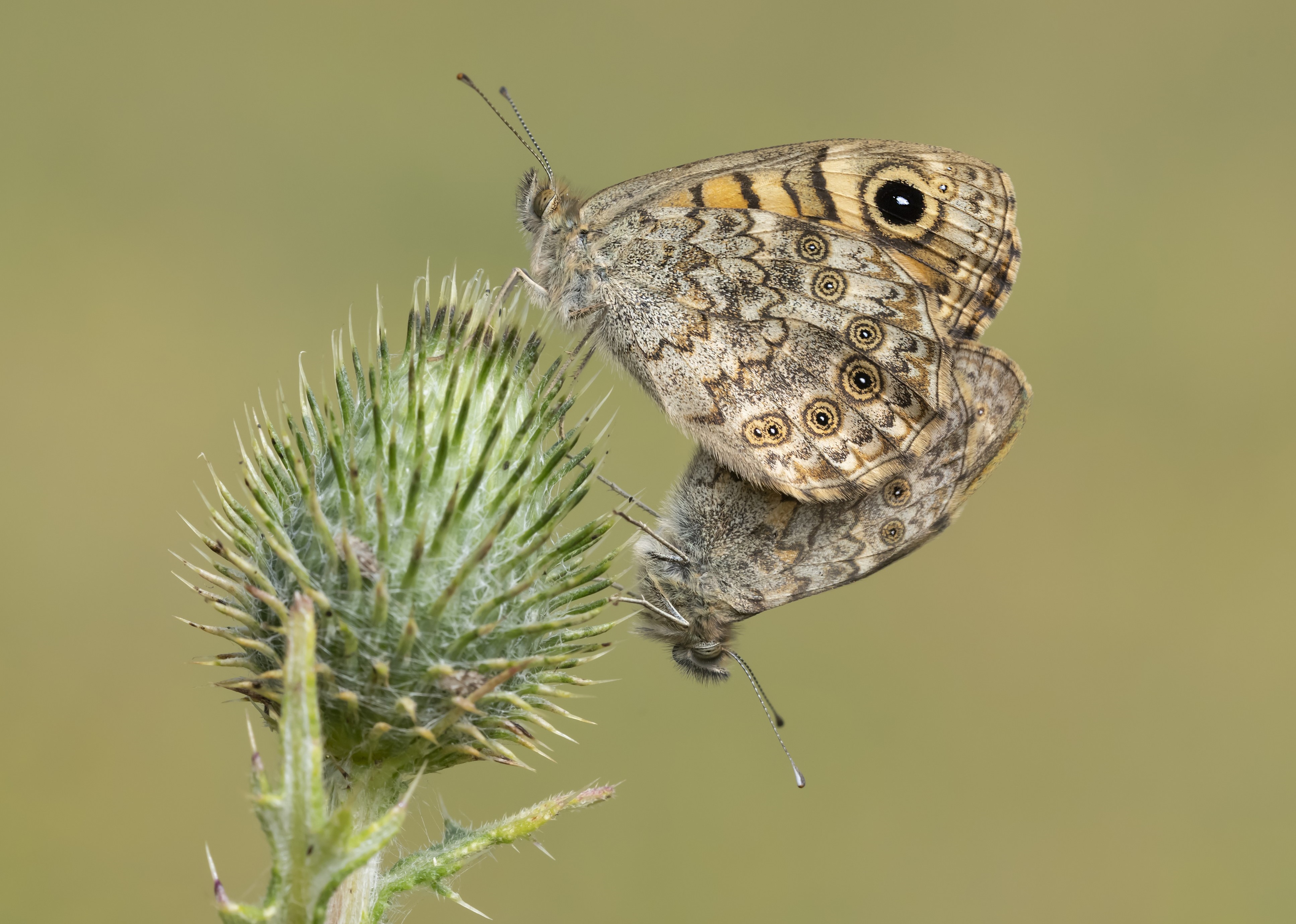
Lasiommata megera
This species has been in national decline for the past few decades but in Sussex it still remains a fairly common butterfly. Between the county surveys of 1990-1994 and 2010-2014 there was a considerable contraction of its range, and it was now largely confined to its stronghold on the South Downs, between Eastbourne and Storrington. In recent years there have been signs that it is beginning to reclaim some of it old haunts, and records of “urban Walls” in Polegate and Hailsham are encouraging.
The upperwings are an orange-brown, with dark brown stripes and bars, and given its usual downland location we are not likely to confuse it with any other species.
The first adults emerge on April 20th or very close to that date, and the flight period for the first brood lasts until mid-June. The second brood, which is much larger, begins in mid-July and usually lasts until early September. There is a partial third brood from mid-September, onwards.
Cissbury Ring between TQ137077 and TQ143081 (via TQ139082), Edburton Hill to Fulking Hill between TQ231112 and TQ250110, High and Over at TQ510009 and also between TQ511014 and TQ488023, Mill Hill between TQ211071 and TQ210075, Steyning Downland Scheme at TQ164113, TQ162109 and TQ168103.

A mating pair of Walls – photo by Bob Eade
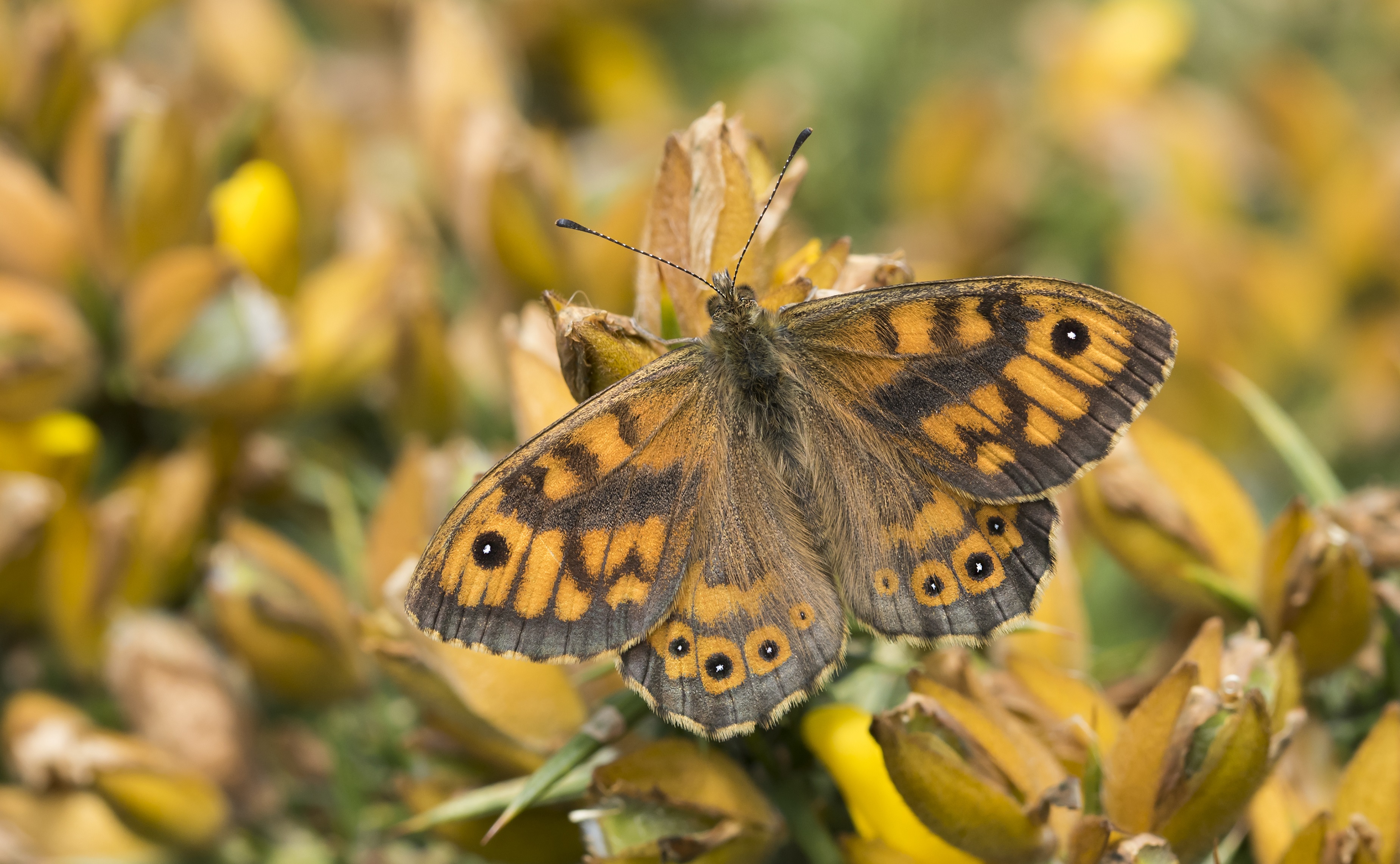
Male with open wings – photo by Bob Eade
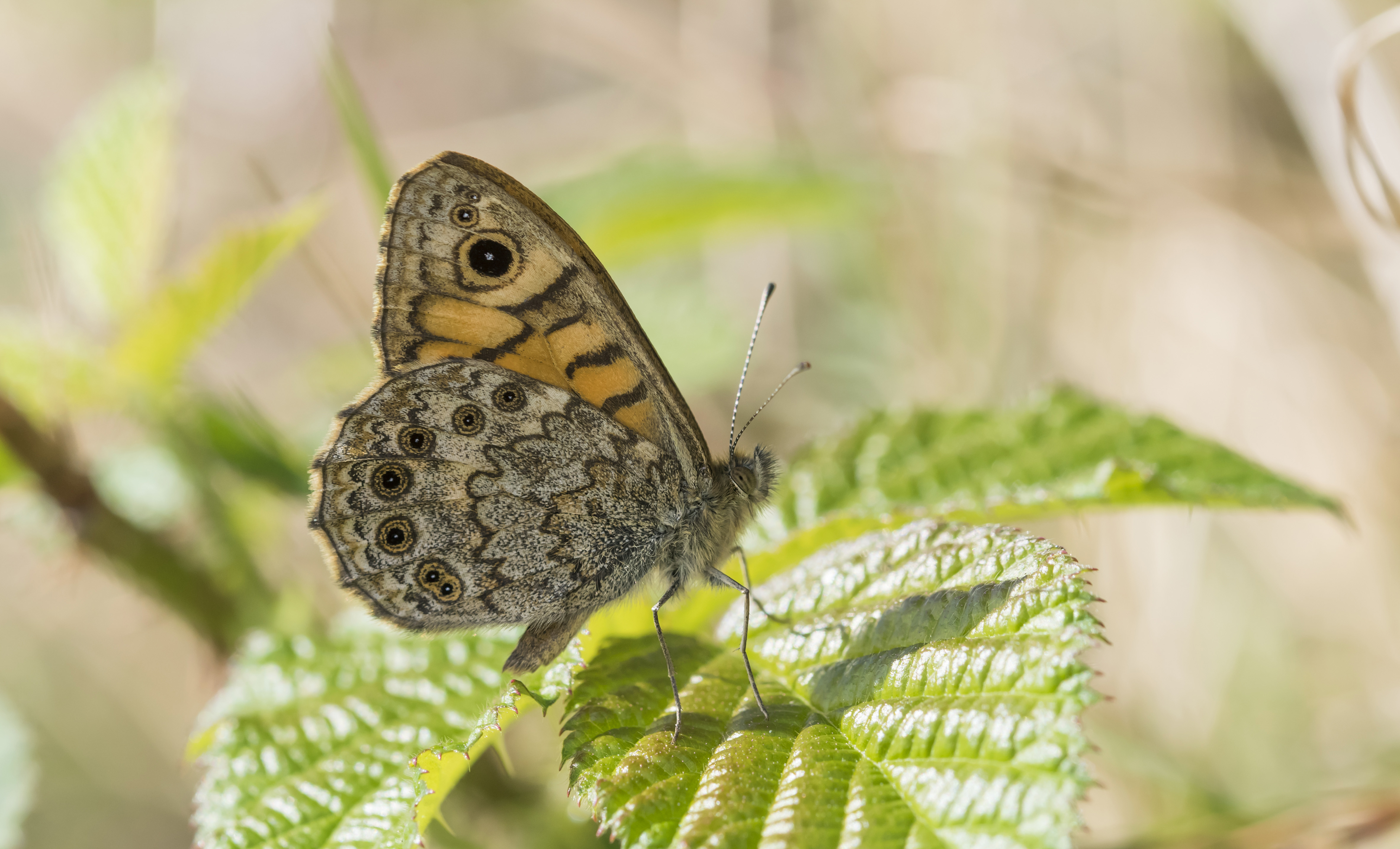
Male with closed wings – photo by Bob Eade
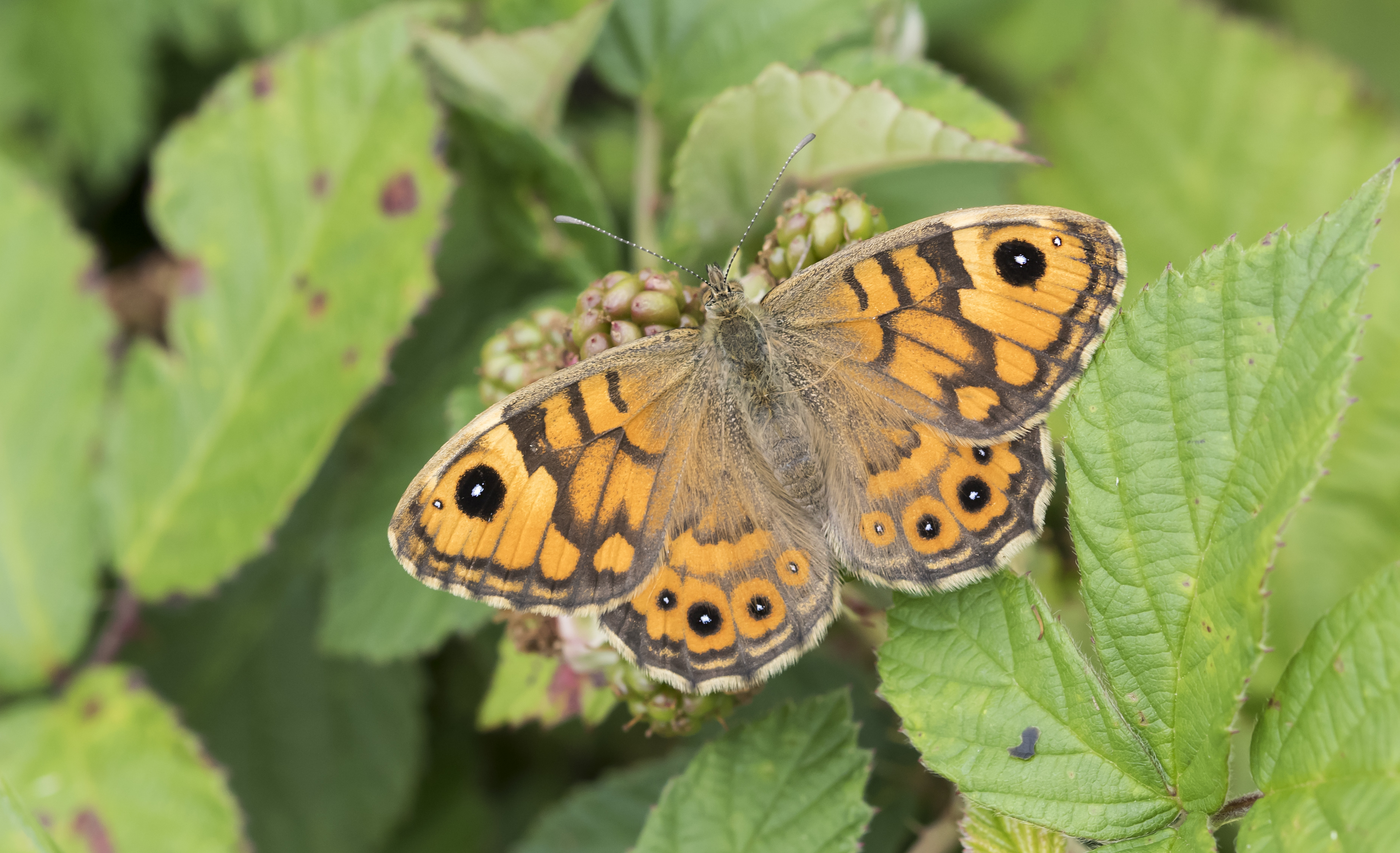
Female with open wings – photo by Bob Eade
.JPG)
Female with closed wings – photo by Bob Eade
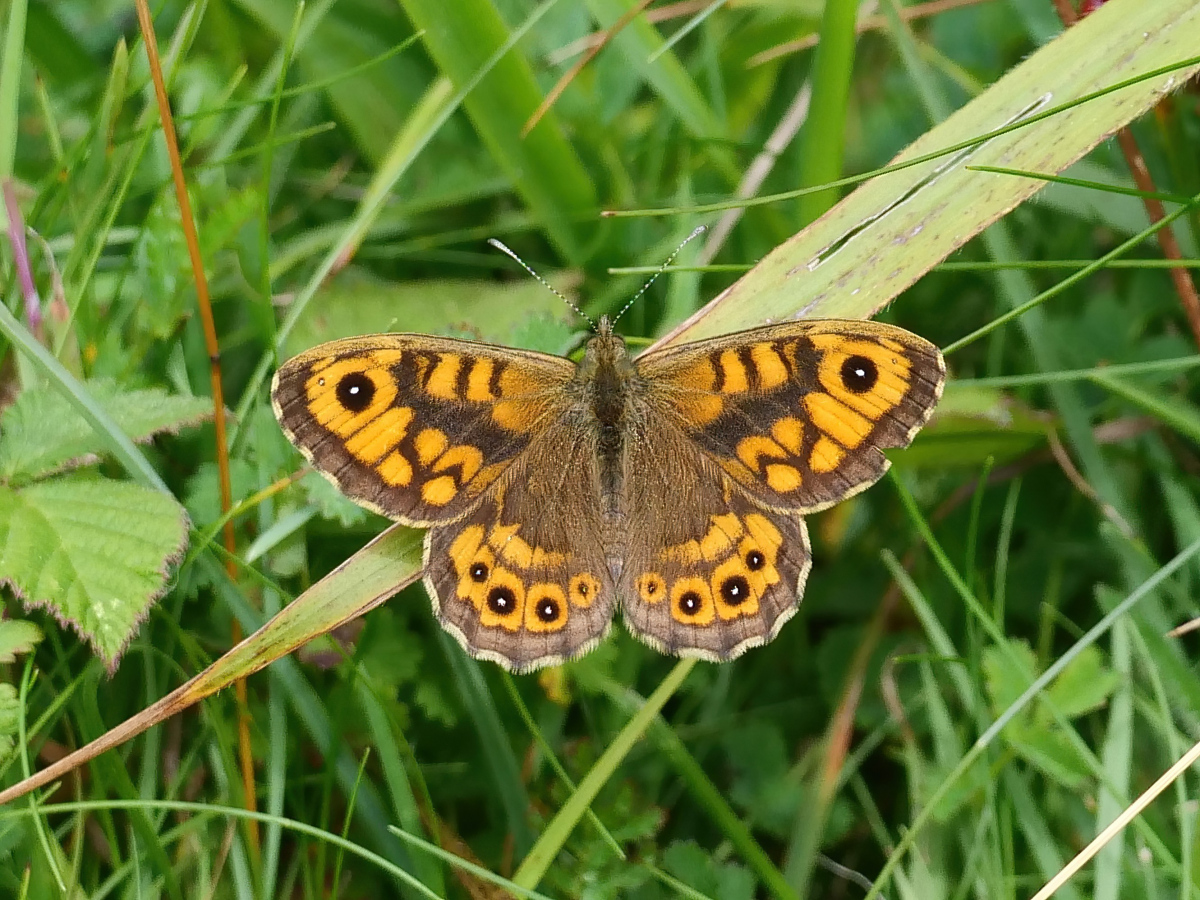
Male Wall Brown – photo by Nicholas Turner
Butterfly Conservation Wall Brown